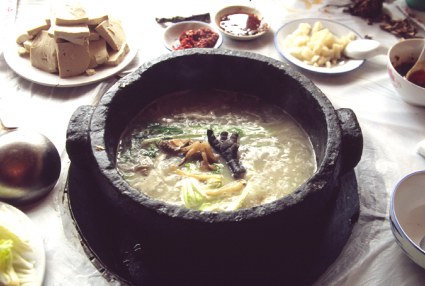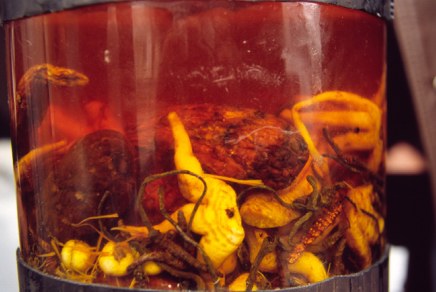|
Morels are known in many areas in Tibet as the Cuckoo mushroom "khukhu shamo", also sometimes pronounced as "gugu shamo".
In Chinese morels are referred to as 羊肚菌 yáng du jun, which means "sheep intestine mushroom".
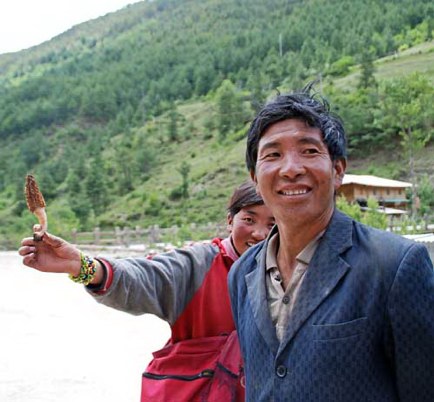 The first morel we came across in Dechen in 2008 during the Cordyceps Tour. The successful morel huntress displaying one of her freshly picked morels became shy and moved out of the picture. Photos: Birong Namri, Shangerila, Dechen / Diqing Tibetan Autonomous Prefecture, Yunnan, May 30, 2008 © Daniel Winkler
Morel taxonomy in China is just being worked on as of mid 2012. In one sentence it can be summarized that East Asia is rich in endemic morel species and that most European taxa do not grow in China. Reference:
Du XH, Zhao Q, O'Donnell K, Rooney AP, Yang ZL. 2012. Multigene molecular phylogenetics reveals true morels (Morchella) are especially species-rich in China. Fungal Genet Biol. 2012 Jun;49.6:455-69. Epub 2012 Apr 6. [Abstract: http://www.ncbi.nlm.nih.gov/pubmed/22503770]. |
My annual Morel & other Mushroom Tours to Tibet
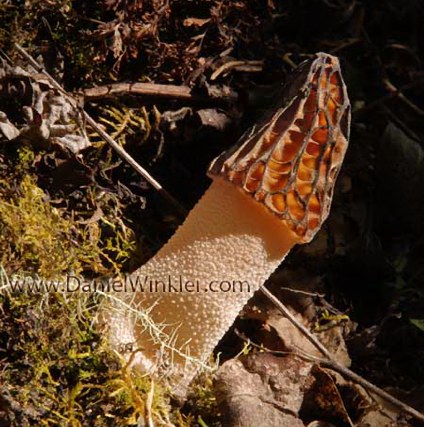 A black morel we encountered in Birong Namri. Morels fruit around the same time as caterpillar fungus in the Tibetan areas. They can grow in a variety of habitats. Some are found around willows (Salix spp.) as the one above, but more often they grow around conifers, as the one shown on the left, which this Tibetan lady just had picked an hour ago on a gugu shamo hunt with her friends .
Photos: Birong Namri, Shangerila Tibetan Autonomous Prefecture, NW Yunnan, May 30 & 31, 2008 © Daniel Winkler
|
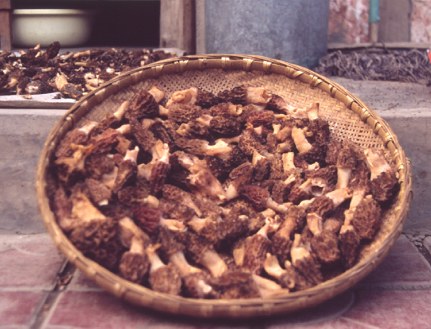 |
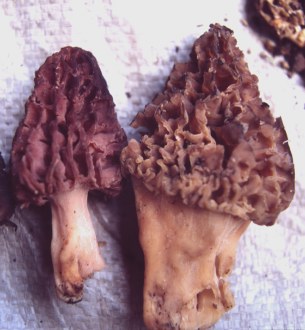 |
|
In spring morels (Morchella spp.) are sprouting in the woods on the Tibetan Plateau. The Tibetan name "khukhu shamo" alludes to its fruiting season, which coincides with the return of the cuckoo, one of Tibet's best known birds due to its unique and loud call. In Riwoche in 2005, I was awoken by the "coo-koooo coo-koooo" calls from a cuckoo right outside of my room.
Photo: Riwoche / Leiwuqi, Chamdo / Qamdo Prefecture, Tibet AR, June 2005 © Daniel Winkler
|
Economically speaking morels are the in the top five of the most important mushrooms in Tibet (for sure after Cordyceps sinensis andTricholoma matsutake, competing with Sarcodon / Hydnum imbricatum). Morels are very valuable, since they are exported to Europe, mostly Germany and France. Going into export multiplies the value by around factor 10 in comparison to mushrooms collected only for the Chinese market. In Kham I was told that Tibetans traditionally did not care for morels and where told by outside buyers what to look for. I observed this process in Nyarong around 1999/2000. However, in Kongpo Tibetans seemed to have collected morels as food (details in my 2007 article on morels in Tibet).
Photo: Riwoche / Leiwuqi, Chamdo / Qamdo Prefecture, Tibet AR, June 2005 © Daniel Winkler
|
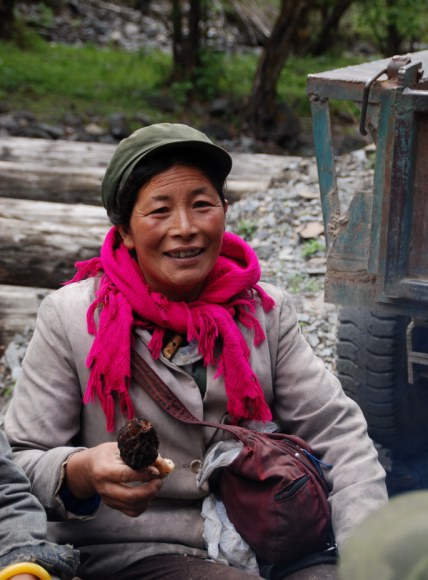 Losang Yangzom with a freshly picked black morel near Birong Namri.
On the left, the group Losang was part of for morel hunting as they were making a tea after emerging from the woods and waiting for a ride down to the village. Most of their men were still up on the mountain collecting Yartsa gunbu, caterpillar fungus.
Photo: Birong Namri, Shangerila, Dechen / Diqing Tibetan Autonomous Prefecture, Yunnan, May 30, 2008 © Daniel Winkler
|
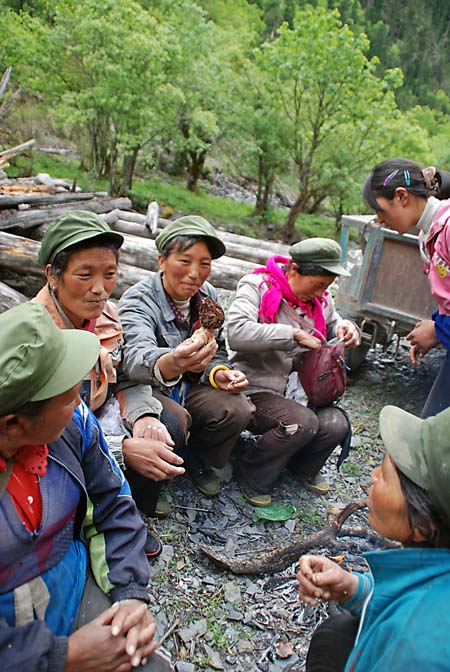 |
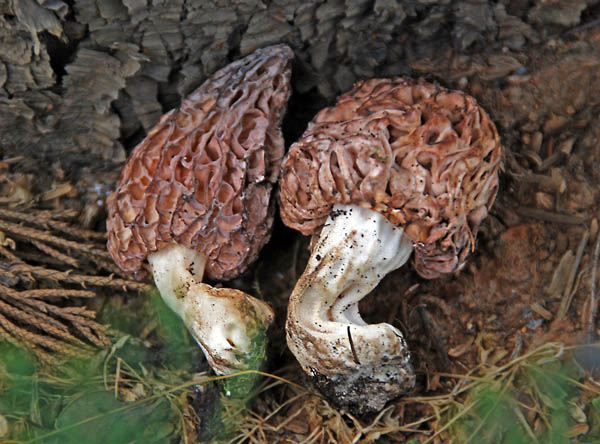 A new species of Morchella, M. bicostata, is described from southwestern China. This species is characterized by reddish-brown to flesh-colored hymenia and tortuous, bicostate ribs. © Daniel Winkler, May 29, 2008, Gyalthang (= Zhongdian, Shangrila / Xianggelila), Dechen / Diqing Tibetan Autonomous Prefecture, Yunnan |
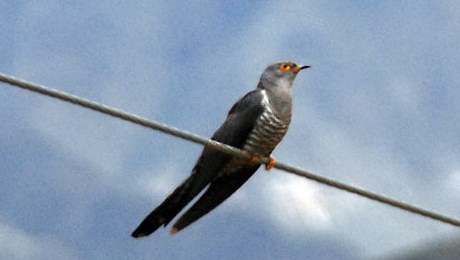 A cuckoo (Cuculus canorus) sitting on a wire. In Tibet the cuckoo besides having the morel named after it, is an iconic bird. It is a symbol of spring, rejuvenation and of course romance. There a many references to cuckoos in songs and poems and even a famous Tibetan Buddhist text from the 8th Century is called Rig pa'i khu byug, "The Call of the Cuckoo" or "The cuckoo's Rigpa" (Rigpa being the innate primordial awareness of the mind). But it is not just the cuckoo's call that makes this bird unique. The cuckoo has developed a very interesting reproductive strategy: outsourcing the raising of its offspring. The mother lays her eggs in the nests of other singing birds, often a fraction of this pigeon-sized bird. I wouldn't wish any bird a cuckoo's egg in its nest. Once hatched, the cuckoo chick kicks out all other eggs or chicks, and within weeks outgrows his adopted parental unit that must feel really confused about the look of their murderous ugly duckling. The tiny parents hardly manage to keep the little monster fed; its open beak is much bigger than their whole head.
© Daniel Winkler, Ganden Monastery, near Lhasa 4700m, July 2009
|
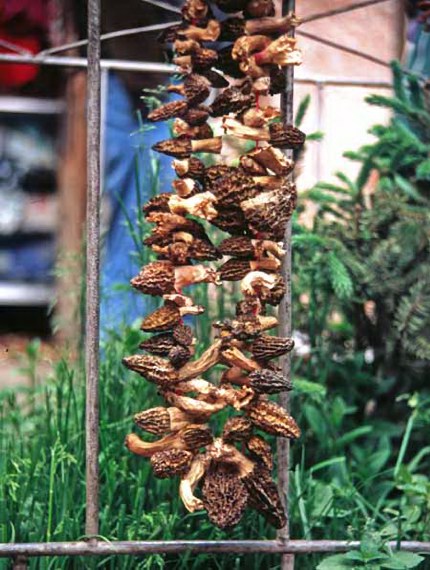 Morels strung for drying. All export is done with dried product.
Photo: Riwoche / Leiwuqi, Chamdo / Qamdo Prefecture, Tibet AR, June 2005 © Daniel Winkler
|
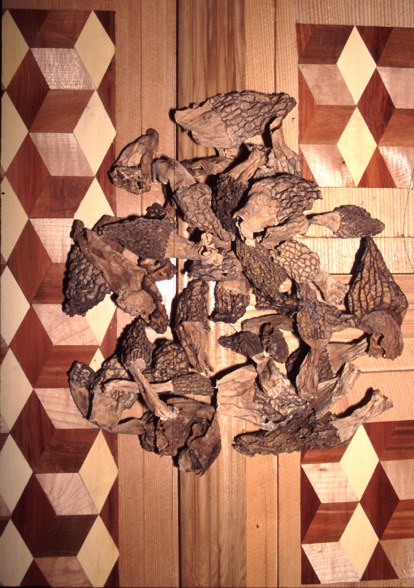 Dried morels laid out on an inlay table in Nyarong. The morel trade commenced in Ganzi the late 1990s, when motorized buyers originally from Yunnan came around and generated a market. Nyarong's morel resources were discovered in 1999. Photo: Nyarong / Xinlong, Kandze / Ganzi TAP, Sichuan. April 2001
© Daniel Winkler
|
|
Another Roadside Attraction in Kongpo
Mr. He's "Soap Soup"
(following Tibetan tradition, to shorten long words one contracts the first syllable and the last to a new term , thus "soap soup" is short for "Soap stone hot pot black Tibetan chicken Wangla Soup"
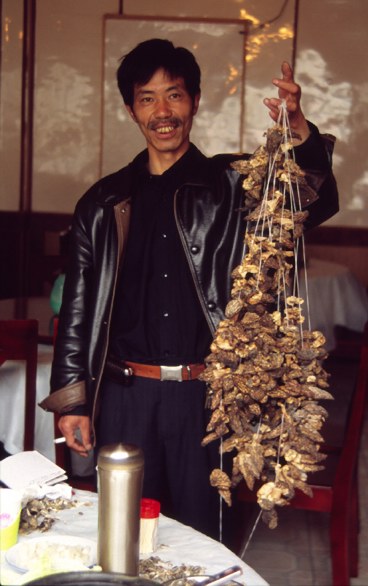 By the way, Mr. He is showing us the morels he had stashed for his patrons. However, I opted for the excellent king boletes. I hope to get there again, for the steinpilze that is, not the chicken feet with the starchy orchid. Photos: Lunang, Pome /Bomi County, Nyingchi / Linzhi Prefecture, Tibet AR, June 2005 © Daniel Winkler
|
Mr. He, originally from Hechuan, Chongqing, owner of a Sichuanese restaurant in Lunang / Lulang. Out of the 10 Chinese restaurants now at this road side stop on the Lhasa- Nyingchi-Chamdo-Chengdu Highway, seven are owned by relatives of Mr. He. He opened the first hot pot restaurant back in 1989 basically in the middle of nowhere. Now the place is renowned for the use of soap stone pots from Metok/ Metuo, which supposedly release precious nutrients. This was started in 1997. The highly praised specialty - few drivers manage to pass by - consists of a chicken soup (see floating foot of the black-skinned chicken, which is a Tibetan specialty) and orchid 'roots' [Chinese Shouzhang Shen, Tibetan: Wang la (dbang lag), Gymnadenia, orHabenaria, possibly also Dactylorhiza ] among other ingredients.
Such a sumptuous and healthy meal needs to be followed by a drink of tempting "yaojiu", Chinese medicinal schnapps, solely drunken for health reasons off course [watch your driver!]. In the center one can recognize the corm-like pseudobulbs of the orchid surrounded by floating caterpillar fungus, Fritillaria bulbs, Gastrodia rhizomes and other tasty stuff. Someone must have stolen the typically floating medicinal snake or poured it by accident with the yaojiu.
|
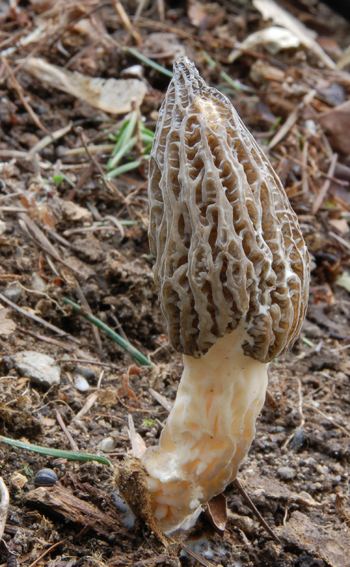 A PNW landscape morel (Morchella importuna) that popped up in our yard in Kirkland, Washington, the last week of March 2007. Interestingly, the fruiting body grew on top of card box material that was laid out to suppress weed growth.
This morel is not growing in Tibet, but the camera that photographed it had been to Tibet, really!
|
Link to my
|
